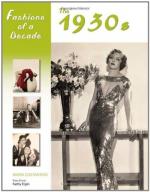|
This section contains 120 words (approx. 1 page at 300 words per page) |

|
As the United States slipped deeper into hard times in the 1930s, manufacturers turned to industrial designers in hopes of stimulating plummeting sales. Manufacturers challenged industrial designers to develop a visual idiom capable of communicating such positive thoughts as "up-to-date," "technologically advanced," and "modern" for their products and thus attract an uncertain buying public. Leading industrial designers, including Henry Dreyfuss, Norman Bel Geddes, and Walter Dorwin Teague, set about reinventing a range of household gadgets from irons to blenders. They were influenced by the rounded corners and streamlining of modern airplanes, trains, and automobiles. Radio cabinets, furniture, pens, toasters, and silverware appeared in shiny metals with curves, etchings, and the appearance of technological advancement.
|
This section contains 120 words (approx. 1 page at 300 words per page) |

|




